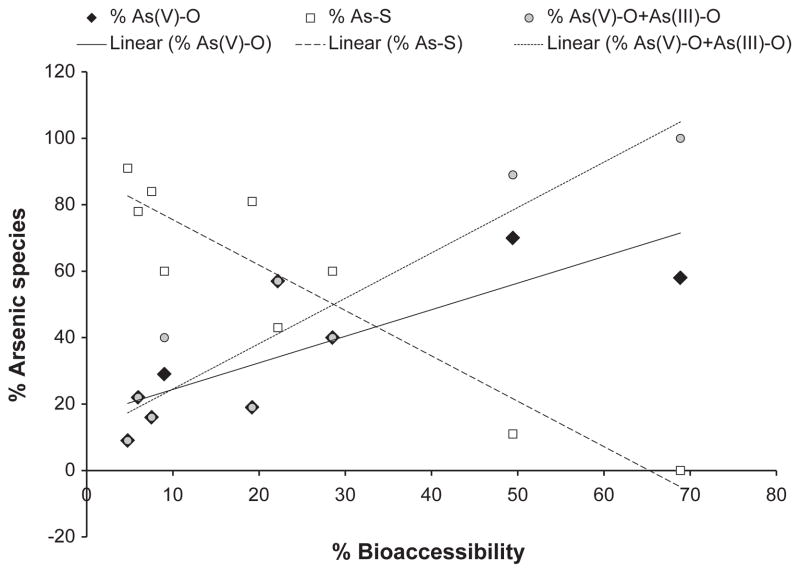Fig. 3.
Percent arsenic species vs. percent bioaccessibility for ◆ As(V)–O species (sum of species matching KH2AsO4 +As(V)–glycerol),
 As(V)–O+As(III)–O, and □ As–S, based on samples (n=9) analyzed by XANES. The correlations of the data are significant (p<0.05, see text for r values), showing that the As(V)–O and As(III)–O species are likely the bioaccessible ones, whereas the As–S species are not.
As(V)–O+As(III)–O, and □ As–S, based on samples (n=9) analyzed by XANES. The correlations of the data are significant (p<0.05, see text for r values), showing that the As(V)–O and As(III)–O species are likely the bioaccessible ones, whereas the As–S species are not.

